Center for Archaeological Science, Sichuan University Reveals Technological Adaptations of Hunter-Gatherers in Arid Desert Areas of Northwest China from the Last Glacial Termination to the Younger Dryas Event
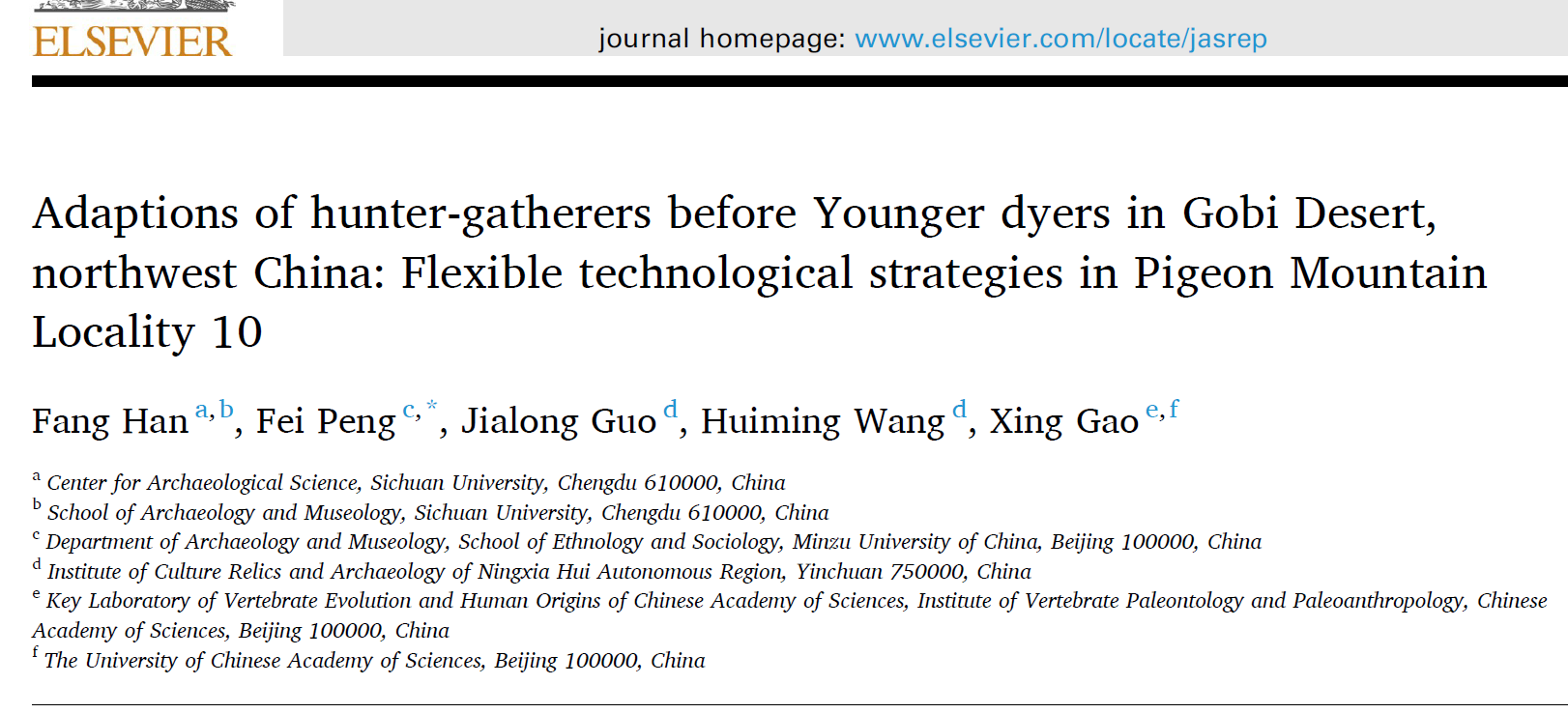
Recently, Dr. Fang Han from the Center for Archaeological Science, Sichuan University, published an article in the international journal "Journal of Archaeological Science: Reports" entitled "Adaptions of hunter-gatherers before Younger Dyers in Gobi Desert, northwest China: Flexible technological strategies in Pigeon Mountain Locality 10". Dr. Fang Han is the first author, Associate Professor Fei Peng from Minzu University of China is the corresponding author, and Researcher Xing Gao from the Institute of Vertebrate Paleontology and Paleoanthropology of the Chinese Academy of Sciences, and Researchers Jialong Guo and Huimin Wang from the Ningxia Institute of Cultural Relics and Archeology are co-authors.
After the Last Glacial Maximum (LGM), the oasis-based hunter-gatherer model played an important role in the Gobi desert region. The Pigeon Mountain site complex, located in the arid and semi-arid desert area of 鈥嬧�媙orthwest China at the southern foot of the Helan Mountains, is at the junction of temperate grassland and temperate desert. It is another area in the desert region of Northwest China that has been intensively developed by hunter-gatherers since the discovery of the Shuidonggou site complex, which is of great significance for understanding the extreme environmental adaptation of ancient humans.
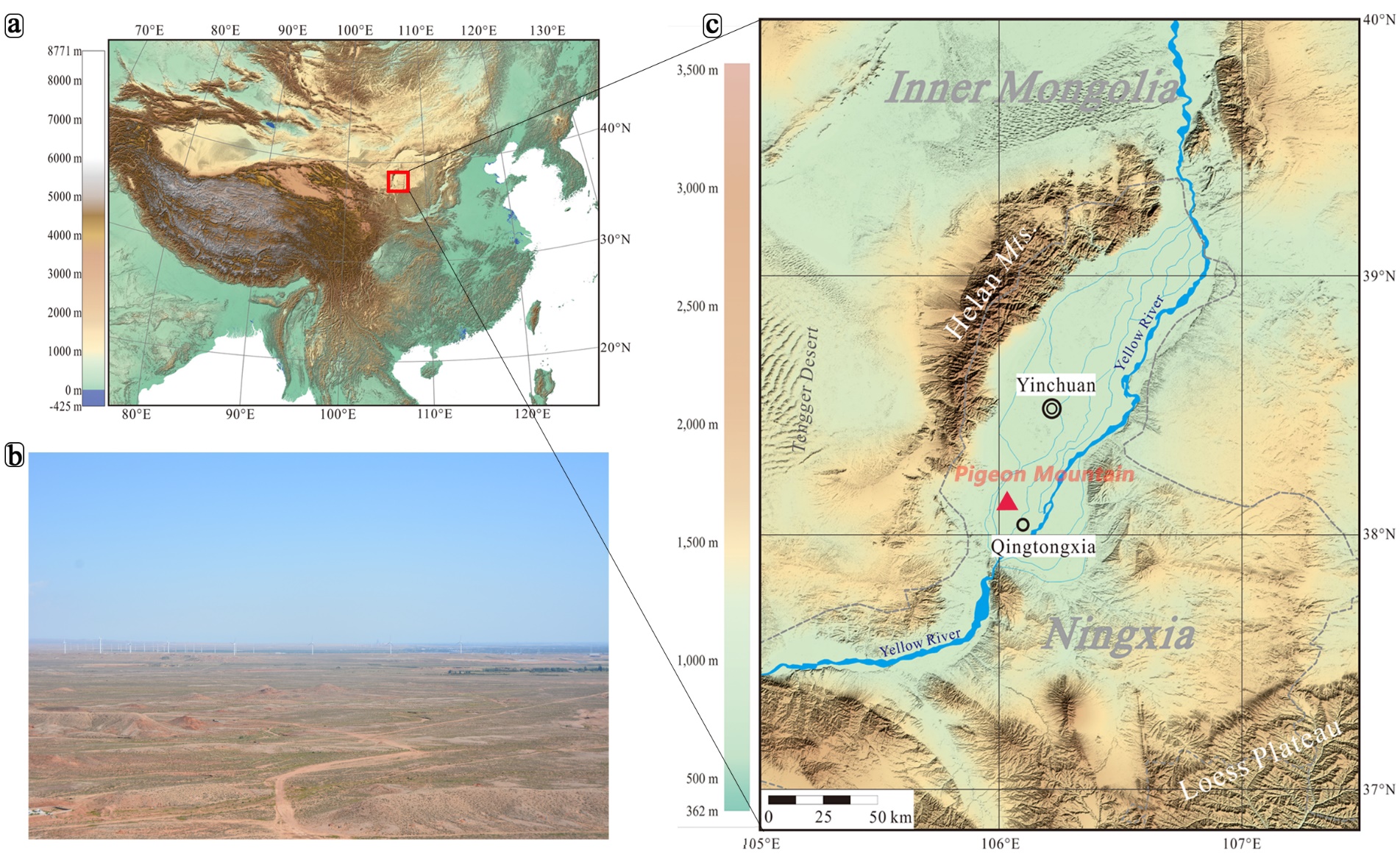
Figure 1 Schematic diagram of the location of the Pigeon Mountain site (a. Research area; b. Summer landscape of the Pigeon Mountain Basin; c. Location of the Pigeon Mountain site)
The Pigeon Mountain site complex was discovered in the 1980s. A total of 13 stone tool locations were found, and trial excavations were carried out at the 3rd location in the 1990s. From 2013 to 2017, the Ningxia Institute of Cultural Relics and Archeology and the Institute of Vertebrate Paleontology and Paleoanthropology of the Chinese Academy of Sciences jointly conducted a systematic survey of the Pigeon Mountain Basin with multiple units, newly discovered locations 14 and 15, and carried out continuous archaeological excavations at location 10 for many years. Based on the introduction of the main cultural layer materials of the 10th site of the Pigeon Mountain site, this study discusses the changes in the lithic technological behavior of ancient humans in this area and the response of technology to environmental changes from the perspective of the technological organization strategy of Paleolithic artifacts and the utilization model of stone materials.
The accumulation at the 10th site of the Pigeon Mountain site is up to 9.5 meters thick. A total of 3 cultural layers have been discovered in continuous years of excavation. The results of carbon-14 and optically stimulated luminescence dating show that the age range of the main cultural accumulation of the site is 11760-12599 years ago (CL2) and 12117-13746 years ago (CL3). Cultural remains are concentrated in the third cultural layer. During the excavation, rich cultural relics such as stone products, Paleolithic remains of fire use (fire pits and dense charcoal distribution areas), pillar holes, ornaments, and animal bones were obtained, reflecting the nature of the central camp of the site. The types of stone products are rich, including microblade technology, simple core-flake technology products, and tools are mainly side scrapers and end scrapers, as well as a small number of bifaces, pointed tools, grinding discs, grinding rods, adze-shaped tools, stone hammers and other objects.

Figure 2 Stratigraphy of the 10th site of Pigeon Mountain (Photos by Fei Peng and Jialong Guo)
Statistics and utilization of stone materials show that the stone materials at the Pigeon Mountain site are mainly local quartzite, siliceous fine sandstone and chert gravel, and also include flint, agate and sporadic opal transported from a long distance. Geological surveys show that flint and agate and other stone materials may come from the Alxa Plateau more than 300km away. All kinds of gravel raw materials come from both sides of seasonal rivers inside the Pigeon Mountain Basin and loose Quaternary sediments in the basin. There are different utilization preferences for the two types of stone materials. High-quality foreign stone materials are mainly used for the production of microblades and small scrapers. Local quartzite and chert are used for both microblade production and expedient core flaking. By analyzing the dimensional changes and proportions of different stone materials and stone products, the utilization differences between the two types of stone materials in different cultural layers, as well as the reuse and multi-functional utilization models of stone products, we believe that ancient humans showed a strengthened utilization method for the two types of stone materials. As time goes by (CL3-CL2), the increasing proportion of local stone materials, especially quartzite, in microblade production and the increasing phenomenon of stone product reuse reflect the increase in the degree of strengthening of ancient humans' utilization of stone materials.
The diachronic changes in lithic technology characteristics are small. Simple core-flake technology shows the following characteristics: 1) The flaking of flakes and cores is simple, and only direct percussion is seen; 2) The cores are mainly natural gravel with a stone skin surface, and the flaking surface shows a variety of organization patterns. Both flakes and cores reflect a non-prefabricated production method; 3) Obvious pits and scars can be seen on the edges of the flake cores and flake platforms, reflecting the multi-functionality of the cores (Figure 3).
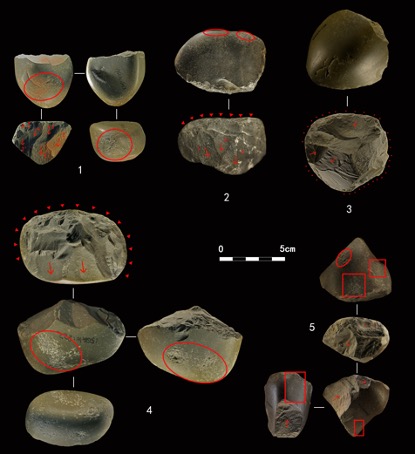
Figure 3 Flake cores at the 10th site of Pigeon Mountain
The microblade technology characteristics in the site are typical products of the non-Yubetsu wedge-shaped microblade core, conical microblade core and semi-conical microblade core production system, but the technical characteristics are unified, reflecting a refined production strategy. At the same time, consistent with the stone material utilization strategy reflected by the simple core-flake technology, attention is paid to saving stone materials. Specifically: 1) In the microblade core prefabrication and flaking stage, the core body of the stone core is not trimmed to ensure that the platform and flaking surface are available (Figure 4); 2) There are multiple updates in the flaking stage. Platform updates are reflected in ensuring that the platform is flat and the edges are available, with local updates that peel off small scars inward around the platform and overall updates to the platform. The concept of flaking surface update is to ensure the converging shape of the bottom of the core, which is reflected in the local update along the bottom edge towards the platform direction. When the working surface is not used at all, the working surface of the microblade core is updated by peeling off the overshot flakes. The working surface update flakes in the site are a reflection of this type of update method (Figure 5); 3) The abandonment of the microblade core is the result of multiple striking accidents or the core being too small, etc., until the core is completely unusable.
There are a large number of springs and abundant stone material resources inside the Pigeon Mountain Basin, which is an excellent habitat for hunter-gatherers in the desert area. However, in the face of a living environment with a high degree of resource concentration, hunter-gatherers occupy key resources and build a central camp here. The strengthening and saving of stone material resources and the use of microblade technology that supports highly mobile activities are strategic choices for ancient humans to cope with resource concentration. The period after the Last Glacial Termination to the arrival of the Younger Dryas event is a critical period of global climate fluctuation and transition, and the main accumulation of the 10th site of the Pigeon Mountain site is just in this period. As time goes by, the sharp decline in cultural relics, the increased intensity of utilization of local stone materials, and the continued reliance on microblade technology all reflect the active response of ancient humans to the arrival of the Younger Dryas event.
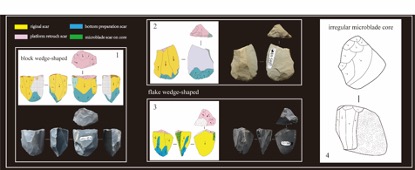
Figure 4 Microblade cores in the prefabrication stage at the 10th site of Pigeon Mountain
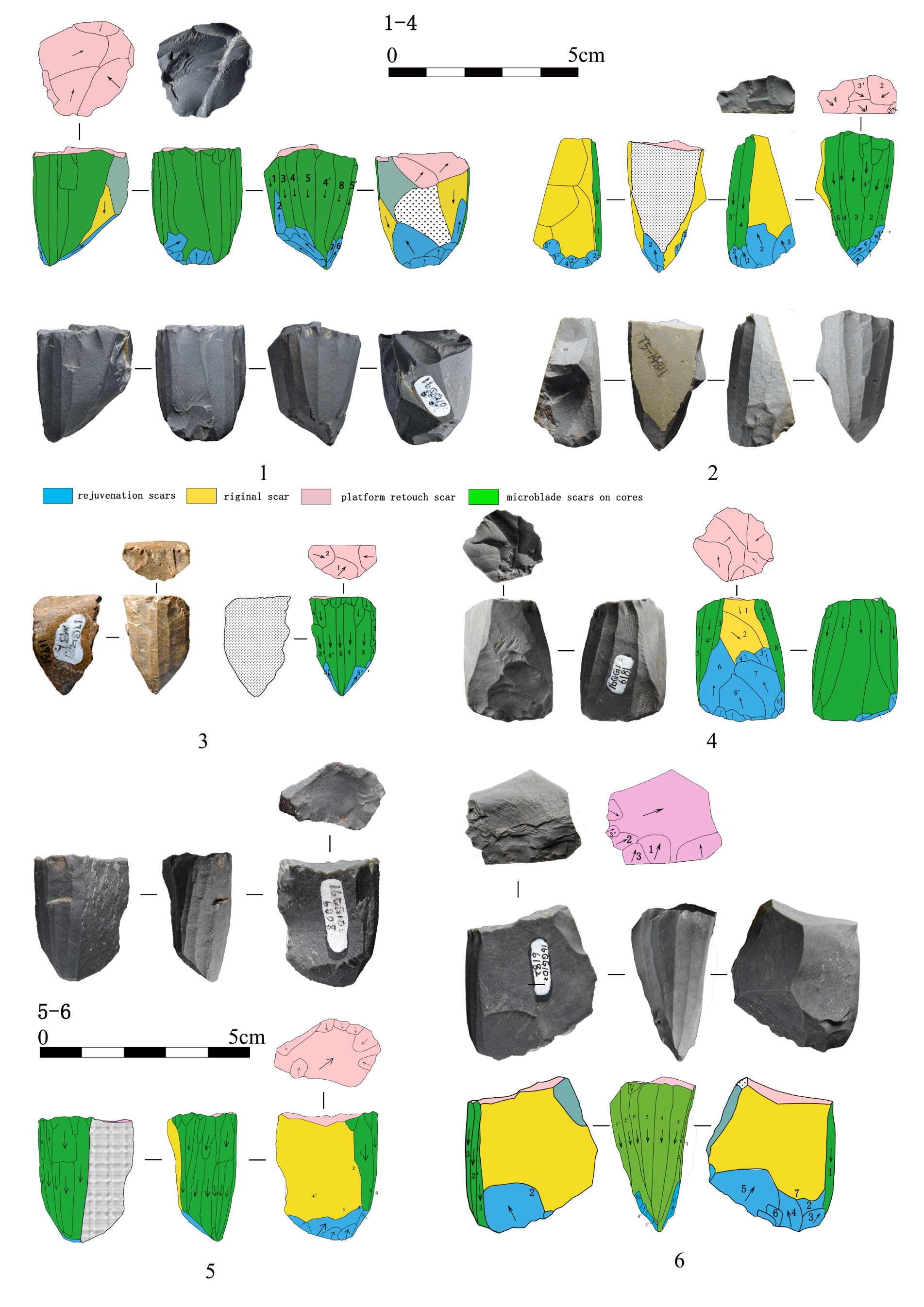
Figure 5 Microblade cores in the update stage at the 10th site of Pigeon Mountain
